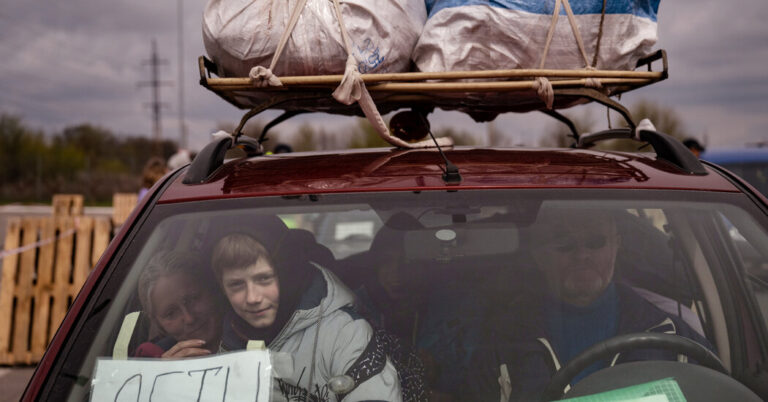Why Hawaii Is Scrutinizing Hawaiian Electric in the Maui Fire
It could take months for officials to identify what caused the fire in Maui last week. But some plaintiffs’ lawyers and investors have already begun to blame Hawaiian Electric, the state’s largest utility.
The utility’s power lines and equipment are one potential source of the fire that has claimed the lives of more than 100 people — a death toll that is expected to rise once the more than 1,000 missing people are accounted for.
Lawyers have filed at least four lawsuits against the company. The suits contend that the company was negligent in the operation and maintenance of its equipment. Among other things, lawyers say the utility should have shut off power to prevent its lines from starting fires during periods of high wind and drought, a practice employed in California.
Those lawsuits have spooked Wall Street traders who fear that the utility will not be able to shoulder liability claims that could add up to billions of dollars. Hawaiian Electric’s stock price has fallen around 68 percent since Aug. 7, the day before the wildfire started, to about $12 on Thursday.
Attention turned to the utility soon after the fires, partly because of videos and photos posted online by people in Maui that seemed to show power lines starting fires. In addition, data from Whisker Labs, a private company that monitors the electrical grid around the country looking for problems that might spark fires in homes, appears to identify serious faults on power lines in the area where the fires started.
Hawaiian Electric has declined to comment in detail about the fires. But the company’s chief executive, Shelee Kimura, said at a news conference on Monday that the company did not have a program that could shut off power pre-emptively to prevent wildfires. She said such a program would have required coordination with emergency workers. Power shut-offs would have made it impossible for people to use medical equipment, water pumps and other essential devices.
“In Lahaina, the electricity powers the pumps that provide the water — and so that was also a critical need during that time,” Ms. Kimura said.
Hawaiian Electric is not the first company to find itself in the spotlight after major wildfires. Aging utility equipment has often been blamed in recent years for igniting devastating fires when it comes in contact with dry vegetation, especially when strong winds are present.
California’s largest electric utility, Pacific Gas and Electric, has been in a similar position several times. State officials identified one of its power lines for setting off the 2018 Camp Fire, which killed 85 people and destroyed the town Paradise. Liability from wildfires forced PG&E to seek bankruptcy protection; the company ultimately agreed to pay $13.5 billion to settle fire claims.
But there are some important differences between California and Hawaii. California law makes it easier to hold utilities liable for wildfires caused by their equipment even if they are not determined to have been negligent. In Hawaii, plaintiffs will have to prove Hawaiian Electric was negligent to hold the utility company liable.
“Although there is limited information so far, investors appear to be assuming the worst given billions of dollars of wildfire exposure” faced by other utility companies, analysts for Bank of America wrote in a note to investors on Tuesday.
Hawaiian Electric was aware of the risks its equipment posed. In a filing to the state’s Public Utilities Commission last year, the company proposed upgrading poles to withstand high winds and cut back vegetation. The filing noted that Lahaina was a priority area. The company said that it would take several years to complete the work.
In addition to decisions by the utility, officials will also focus on invasive grasses on the slopes above Lahaina. Introduced to Hawaii to feed livestock, the grasses have taken over old sugar and pineapple plantations. The grasses tend to grow quickly when it rains but become fuel for fires in the dry season.
Hawaii’s attorney general, Anne Lopez, said her office would conduct a “comprehensive review of critical decision-making and standing policies leading up to, during and after the wildfires on Maui.”
In a statement, Hawaiian Electric said it was “working with the state and county to determine what happened.”
Investigations into the source of wildfires can take a few weeks to several months, according to Lee Frelich, director of the Center for Forest Ecology at the University of Minnesota. California officials took six months to conclude that PG&E’s equipment caused the Camp Fire.
Officials try to determine a fire’s start by assessing video evidence and interviewing witnesses. Investigators then look for clues pointing to some common causes like lightning, downed power lines or campfires.
“That means assembling a bunch of different types of evidence,” Mr. Frelich said.
Such work could be difficult, he said, because many potential witnesses are displaced or have lost family members in the fire.
Susan C. Beachy contributed research and Peter Eavis contributed reporting.
Check out our Latest News and Follow us at Facebook
Original Source







